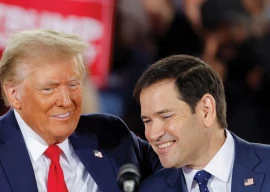
The long-awaited draft policy aims to bring down airfares to 2,500 rupees ($40) per hour of flying on many regional routes through a slew of tax incentives, subsidies and a two percent levy on international and some domestic routes.
Indian airport becomes world’s first to operate on solar power
It outlines plans to revive India's dilapidated airports and airstrips, of which only about 75 out of 476 are in regular use, and setting up a fund to improve access to rural areas.
Air travel in India is mostly confined to the third of the population that lives in cities, putting it out of the reach of hundreds of millions.
"The prime minister has said... it should be a policy which takes flying to masses, it should no longer confine flying only to the elite," Secretary for Civil Aviation Rajiv Nayan Choubey told reporters.
"We should promote regional connectivity in a manner which makes it possible for the ordinary middle-class Indian to start flying," Choubey said, adding the scheme would start in April 2016.
"We will be giving several incentives in order to bring down the cost of flying as much as we can."
Only 70 million of India's 1.2 billion citizens flew domestically in 2014-15, according to the Sydney-based Centre for Asia-Pacific Aviation (CAPA), making it one of the world's most under-penetrated markets.
Indian Airline IndiGo orders 250 A320neos, a record for Airbus
The government said it aims to increase domestic ticket sales to 300 million by 2022 and 500 million by 2027.
The draft National Civil Aviation Policy, which looks to overhaul rules dating back to the 1930s, has been submitted to stakeholders for review.
India's aviation industry has criticised the government in the past for failing to reform the heavily regulated market.
With the exception of budget carrier IndiGo, most domestic airlines are suffering losses and are mired in debt.
"There are a number of rules and regulations that restrict airlines, or force airlines to operate in ways that might not be very commercially viable," Binit Somaia, South Asia director at CAPA told AFP last week.
The draft policy contains steps to reduce red tape, including a plan to deregulate charter flights -- which do not follow a fixed schedule -- into and within India.
And it moots allowing "completely liberalised" code-sharing, where an airline sells seats on a flight run by another carrier.
Indian airline blocks woman in short dress from flight
The government is also considering scrapping or amending the "5-20 rule", which requires local airlines to operate for five years and have a fleet of at least 20 planes before they can fly internationally.
However, some Indian airlines are opposed to scrapping the 2004 rule, saying it would favour cash-rich international airlines coming into the domestic market.
The move to increase flights - which are far more carbon-intensive than trains - may clash with Prime Minister Narendra Modi's environmental commitments, including a plan to cut emissions intensity by 35 percent by 2030.
The draft policy said the government would work with industry to make airports carbon neutral in 15 years' time and pursue limits on emissions from aeroplanes.
India's aviation sector has undergone rapid transformation since a liberalisation drive began in 2003, but it still ranks tenth in the world.






1732445375-0/Untitled-design-(9)1732445375-0-270x192.webp)


1732428810-0/Copy-of-Untitled-(3)1732428810-0-270x192.webp)
1732425487-0/BeFunk_§_]__-(42)1732425487-0.jpg)






COMMENTS
Comments are moderated and generally will be posted if they are on-topic and not abusive.
For more information, please see our Comments FAQ